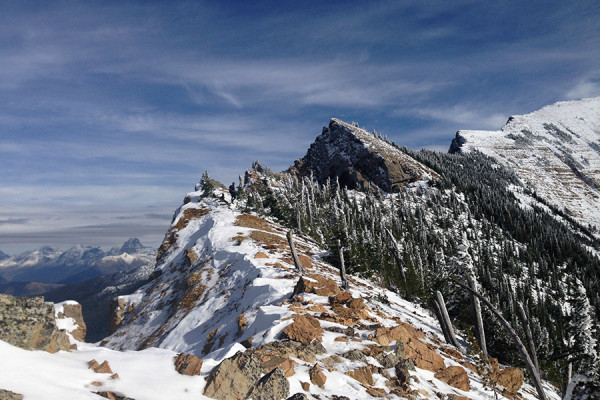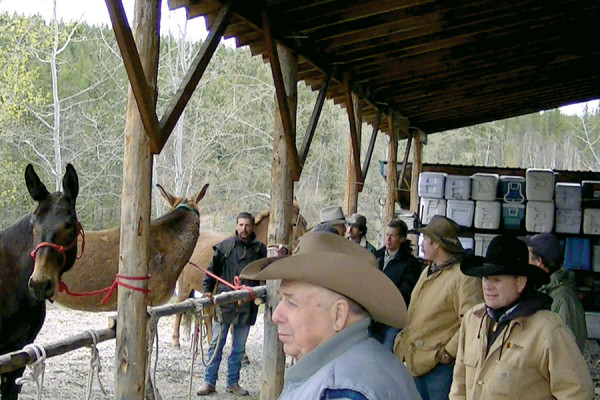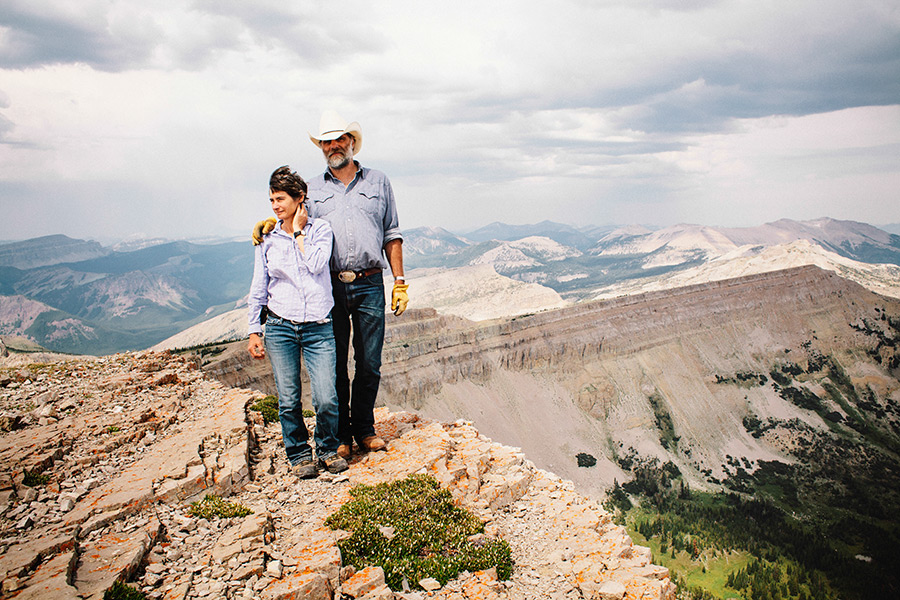The idea of bestowing future generations with a rare “glimpse of the world as it was in the beginning,” which is how President Lyndon Johnson articulated the thrust of the monumental Wilderness Act 50 years ago, is a uniquely American invention.
It’s born of a frontier spirit, championed by early advocates with heroic legacies – activists like Bob Marshall, whose lightning-charged passion is considered the impetus for the wilderness preservation movement, and Howard Zahniser, the primary author of the Wilderness Act of 1964, the text of which reads more like a tone poem to the nation’s wild, untamed places than a piece of legislation.
In the last half-century, the Wilderness Act, signed into law Sept. 3, 1964, has shaped Montana’s landscape more than any other law, protecting 3.5 million acres in the Treasure State (or about 3.75 percent of the state’s lands) and creating the first formal mechanism for designating wilderness areas under the National Wilderness Preservation System.
Today, there are 758 wilderness areas covering 109 million acres, or 5 percent of the nation’s landmass. Montana is home to 16 designated wilderness areas. They include the highest peaks, as well as low-lying marshland suited for wildlife refuges, elk-choked passes, and gin-clear streams, collectively supporting thousands of species of flora and fauna, a number of them threatened or endangered.
A half-century of wilderness is cause for celebration, advocates say, and a slate of events is planned to observe the milestone. But many of Montana’s most tireless advocates are still pressing on in an effort to ensure that the next half-century keeps those wild places intact.

More than ever, now is the time to apply pressure, they say, rather than sit back on the laurels of advocates before them – particularly as a new suite of challenges, including climate change and population growth, threatens to affect water and air quality.
Smoke Elser spent 50 years guiding in the Bob Marshall Wilderness Area and is the pupil of Tom “Hob Nail” Edwards, who, during his testimony to the Montana Legislature on the Scapegoat Wilderness, coined the phrase “Hush of the Land.”
Elser, 80, had a front-row seat during the historic Scapegoat Wilderness designation and is still active in a movement that he’s watched evolve from a nascent idea to the stalwart of conservation that it is today.
In the early days, many of the plans were hashed out over kitchen tables, in community halls and at public meetings, he said. But through the years he’s found that one of the most influential factors in impressing the significance of wilderness on the American public is by leading them off the grid, and by ensuring that young people develop an attachment to wild places.
“In my business, we never made a lot of money. But on every trip I took into the hills I found great satisfaction in being able to take guests from all over the world and take them into a wilderness and interpret that wilderness to them,” Elser said. “The value was our ability to share the wilderness concept with many, many people and have them take that away from the experience. Because of that, I believe wilderness will survive.”
Many advocates are pushing for new wilderness designations in a system they say has been gridlocked by partisan politics.

No additional wilderness has been added in Montana in more than 30 years, despite a dozen proposed bills
The Rocky Mountain Front Heritage Act, introduced by now-retired Sen. Max Baucus, would add 67,000 acres of wilderness to the Bob Marshall Wilderness Complex. It would designate more than 200,000 acres as a conservation management area that would limit road building. Sen. Jon Tester’s Jobs and Recreation Act would protect around 640,000 acres as new wilderness on three national forests and adjacent BLM lands, and 360,000 acres of recreation areas allowing some motorized or commercial use in Montana.
The political landscape has changed for the conservation movement, and passage of even such homegrown legislation may be unlikely.
But that doesn’t justify complacency, said Stewart Brandborg, 90, who as associate director of The Wilderness Society in 1960 waded deep into the fray and was embedded in the trenches during what was arguably the zenith of the environmental movement.
“This always was an uphill battle, but the hot oil of public pressure poured down the backside of Congress is still a powerful tool,” Brandborg said.
Brandborg worked closely with Zahniser, the Wilderness Act’s primary author and previous director of The Wilderness Society, and in 1956 helped write the first draft of the Wilderness Act, which would go through more than 60 revisions before its passage.
He recalls fighting tooth and nail to convince political leaders and industry lobbyists of the importance of wilderness, and to clear the hurdles of development. After the initial draft was introduced in the House and Senate, an eight-year-long battle ensued, and at times the movement seemed on the verge of collapse.
“To a substantial extent, it was the champions of industry – mining, oil and gas development, timber people that wanted to use the national forests for their legitimate operations – who came after the wilderness bill with a vengeance,” Brandborg recalled. “They would fight it to a standstill and they fought with every resource they had. It was met by a strong wall of opponents from those commercial factors.”
Still, he said, the strong support of the American public eventually overwhelmed the opposition.
“The counter to that in the course of some 17 congressional hearings, two in the Senate and the rest in the House of Representatives, was the public expression of support,” Brandborg said. “And that was loud and effective, coming from a broad representation of hunters and fishermen, from bird lovers and conservationists who saw the value in protecting wild lands that were not impacted by human beings, who valued the experience human beings enjoy in wild country. This was the grand majority that inundated the halls of Congress with mail over this eight-year struggle.”
If the movement had succumbed to defeat or eased up on pressure, Brandborg said, it would not have been so effective.
“The number of letters and communications exceeded anything that Congress had experienced. In the end, the proponents of industry couldn’t muster anything more than a minority,” he said.
Today, The Wilderness Society reports more than two-dozen wilderness bills stymied by congressional gridlock, including those in Montana, despite the state’s legacy of protecting public lands.
Results of a survey released in June showed 78 percent of 500 state residents questioned agreed that protecting some public lands in Montana has been positive for the state. The survey was funded by the University of Montana’s Crown of the Continent and Greater Yellowstone Initiative.

Montana has long been a pioneer in foisting unique protections on lands, and is home to the first tribal wilderness area designated on its own by a tribe, the Mission Mountains Tribal Wilderness, established in 1982 by the Confederated Salish and Kootenai Tribes.
In 1983, the Lee Metcalf Wilderness was designated, becoming the first wilderness area managed by the Bureau of Land Management. (One of the four units that make up the Lee Metcalf Wilderness is managed by the BLM, while the others are managed by the Forest Service.)
Connie Long, chair of the Back Country Horsemen of Montana and owner of Bob Marshall Wilderness Outfitters, is an advocate for additional wilderness protection. Last summer, she helped lead a group of teenagers on a trip in “the Bob” to film a documentary called “Untrammeled,” which advocates passing the torch of conservation on to younger generations.
“We have to engage those age groups now in order to get them exposed. They’re too young at this point to make a big difference but when they are adults they need to be ready to carry on the torch for wilderness stewardship,” Long said. “There’s two bills right now before Congress and we are real advocates of trying to get those passed.”
Creating wilderness areas has been a divisive issue from the beginning, and when the original Wilderness Act passed, designating 9.1 million acres and 54 wilderness areas in 13 states, it was viewed by the conservation movement as a defeat. Conservation groups had expected 50-60 million acres to be protected with the bill’s signing, but about 9 million acres were initially set aside, Brandborg recalled. Critics argued that the criteria to determine wilderness were vague and open to interpretation.
That forced Brandborg and others to continue fervently championing the cause, laying the groundwork necessary to win public support to include other individual wilderness areas in the system.
In Montana, five wilderness areas were initially designated – the Anaconda Pintler (158,615 acres), Bob Marshall (1,009,356 acres), Cabinet Mountains (94,272 acres), Gates of the Mountains (28,562 acres) and Selway-Bitterroot (251,443 acres).
In 1972, with the help of advocates like Elser and Brandborg, the nearly 240,000-acre Scapegoat Wilderness Area was designated, becoming the first citizen-designated wilderness in the nation.
Those early efforts stand out as among the most significant in the environmental movement for folks like Greg Schatz, who has spent most of his life in the wilderness, and today volunteers countless hours with the Bob Marshall Wilderness Foundation, packing in tools and gear with his string of horses for volunteers on the foundation’s many trail projects.
Schatz estimates that, in the 24 years he’s been packing into the Bob, he has logged 20,000 miles on his horses.
Schatz said he’s spent as much time concerned for the future of wilderness as he has enjoying it, but in recent years he’s grown more optimistic. The Montana Wilderness Association has been working to inspire the next generation of conservation champions through its NexGen program, which aims to expose young people from all walks of life to the wilderness and promote conservation.
“I was concerned but now I think that the future generation of conservation champions is poised to carry on that torch,” he said.
Elser agreed, saying that, so long as younger generations find the time to step away from the frenetic pace of 21st-century living, away from the distractions of technology and into the solace of the wilderness, the cause will hold its momentum, perhaps even gain ground.
“I wish I was young enough to look forward to the next 50 years because they’ll be good years. I’m confident that I’ve done my best to pass this along to future generations,” Elser said. “I know that it will survive.”
